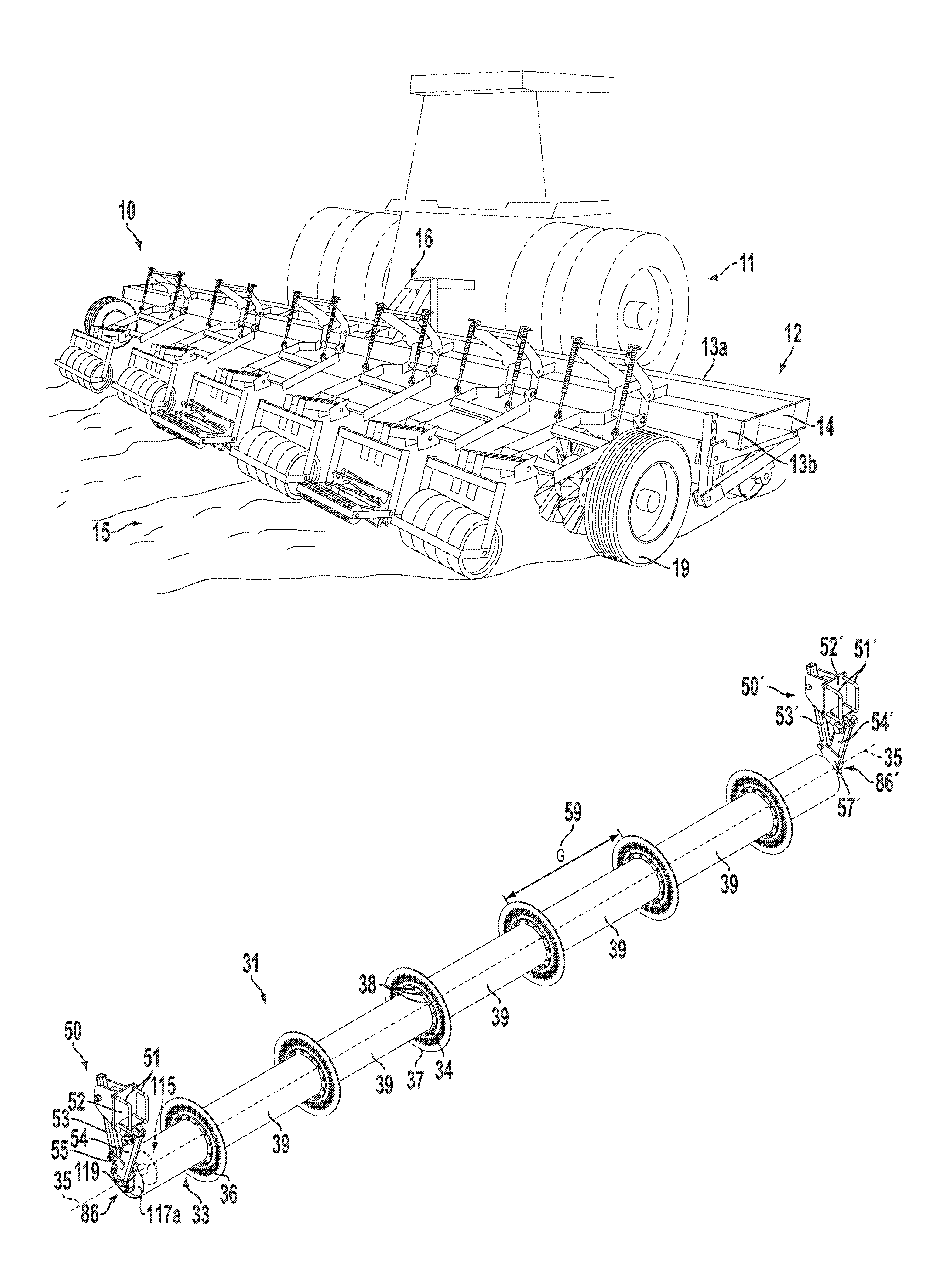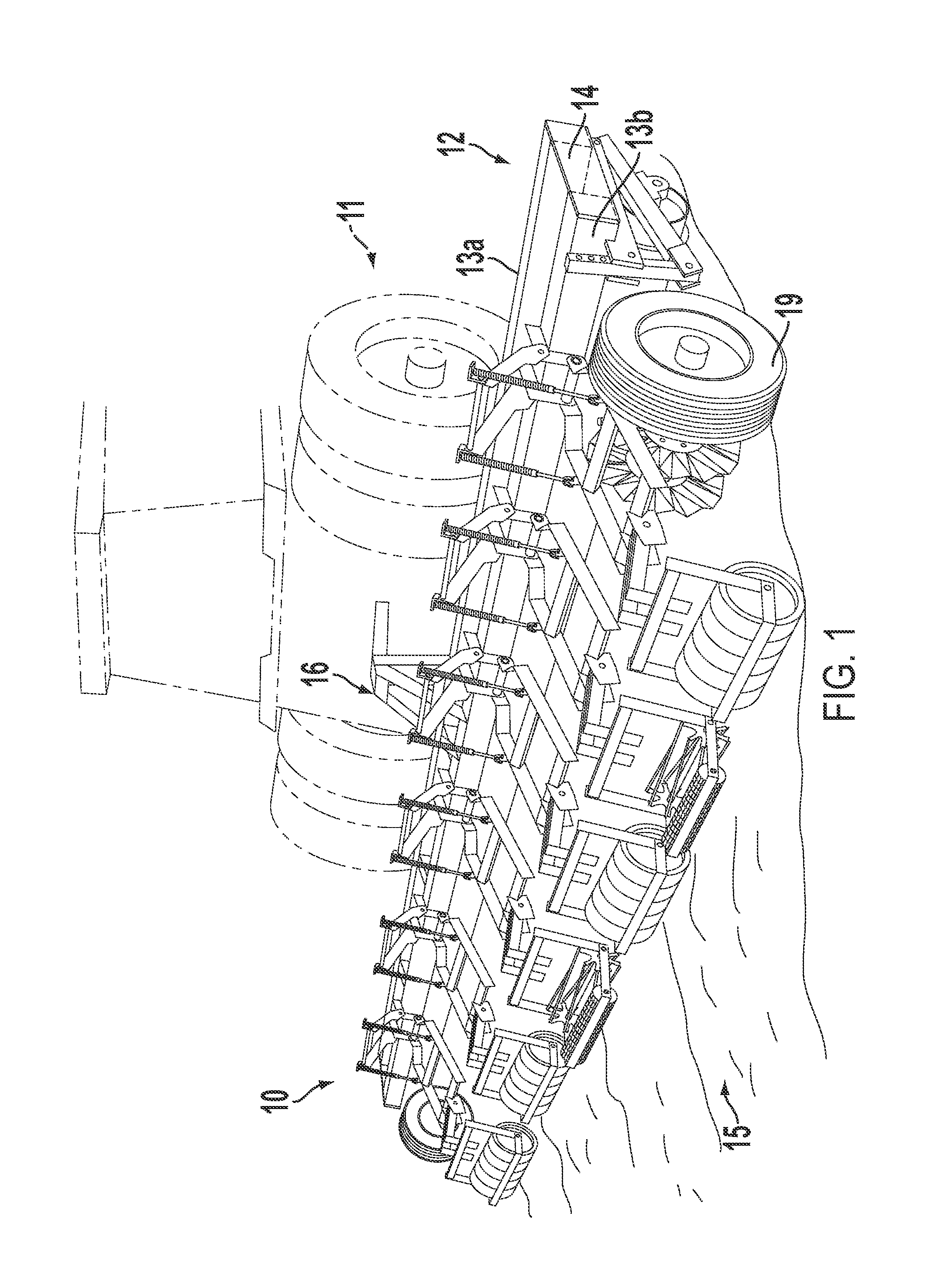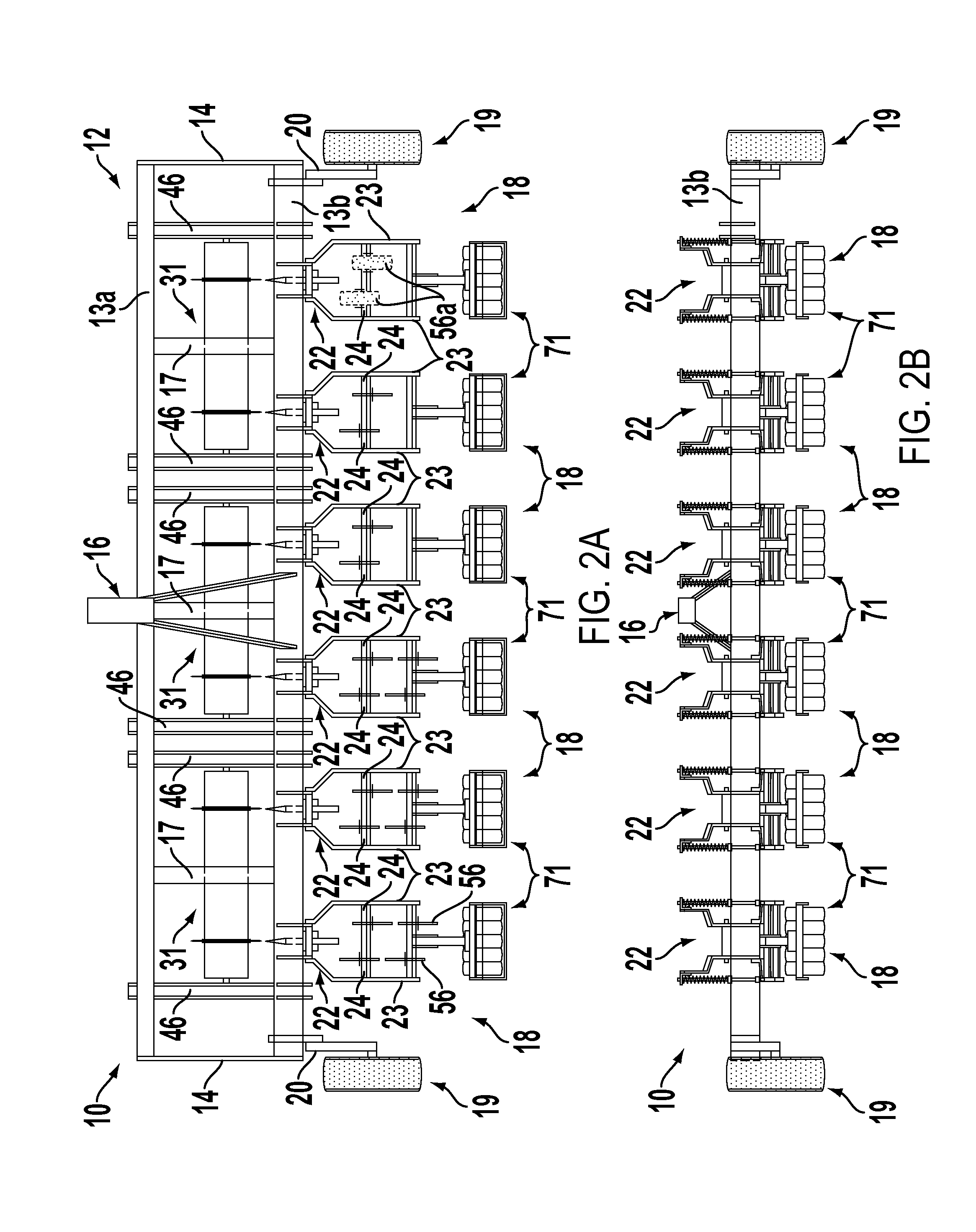Tiller for residue crop preparation
- Summary
- Abstract
- Description
- Claims
- Application Information
AI Technical Summary
Benefits of technology
Problems solved by technology
Method used
Image
Examples
Embodiment Construction
[0035]Referring to the drawings for a better understanding of the function and structure of the invention, FIG. 1 shows a perspective view of the tiller 10 when in use in a farm field. The tiller 10 is designed to be pulled by a tractor 11 to till multiple rows of soil 15 for planting seeds to grow various types of farm crops and vegetation (not illustrated). In particular, the tiller 10 is designed to till either live or killed cover crops in preparation for planting of a primary crop during the growing season. The tiller 10 is primarily a type of “strip tiller” because aside from cover crop compaction narrow strips of planting rows are tilled while leaving the surrounding compacted cover crop intact.
[0036]Pursuant to FIG. 1, a standard hitch 16 allows for the connection of the tiller 10 to tractor 11 such that hydraulic control by the tractor 11 over the tiller is maintained. The structure of the hitch 16 permits the operator of the tractor 11 to raise and lower the tiller 10 to a...
PUM
 Login to View More
Login to View More Abstract
Description
Claims
Application Information
 Login to View More
Login to View More - R&D
- Intellectual Property
- Life Sciences
- Materials
- Tech Scout
- Unparalleled Data Quality
- Higher Quality Content
- 60% Fewer Hallucinations
Browse by: Latest US Patents, China's latest patents, Technical Efficacy Thesaurus, Application Domain, Technology Topic, Popular Technical Reports.
© 2025 PatSnap. All rights reserved.Legal|Privacy policy|Modern Slavery Act Transparency Statement|Sitemap|About US| Contact US: help@patsnap.com



